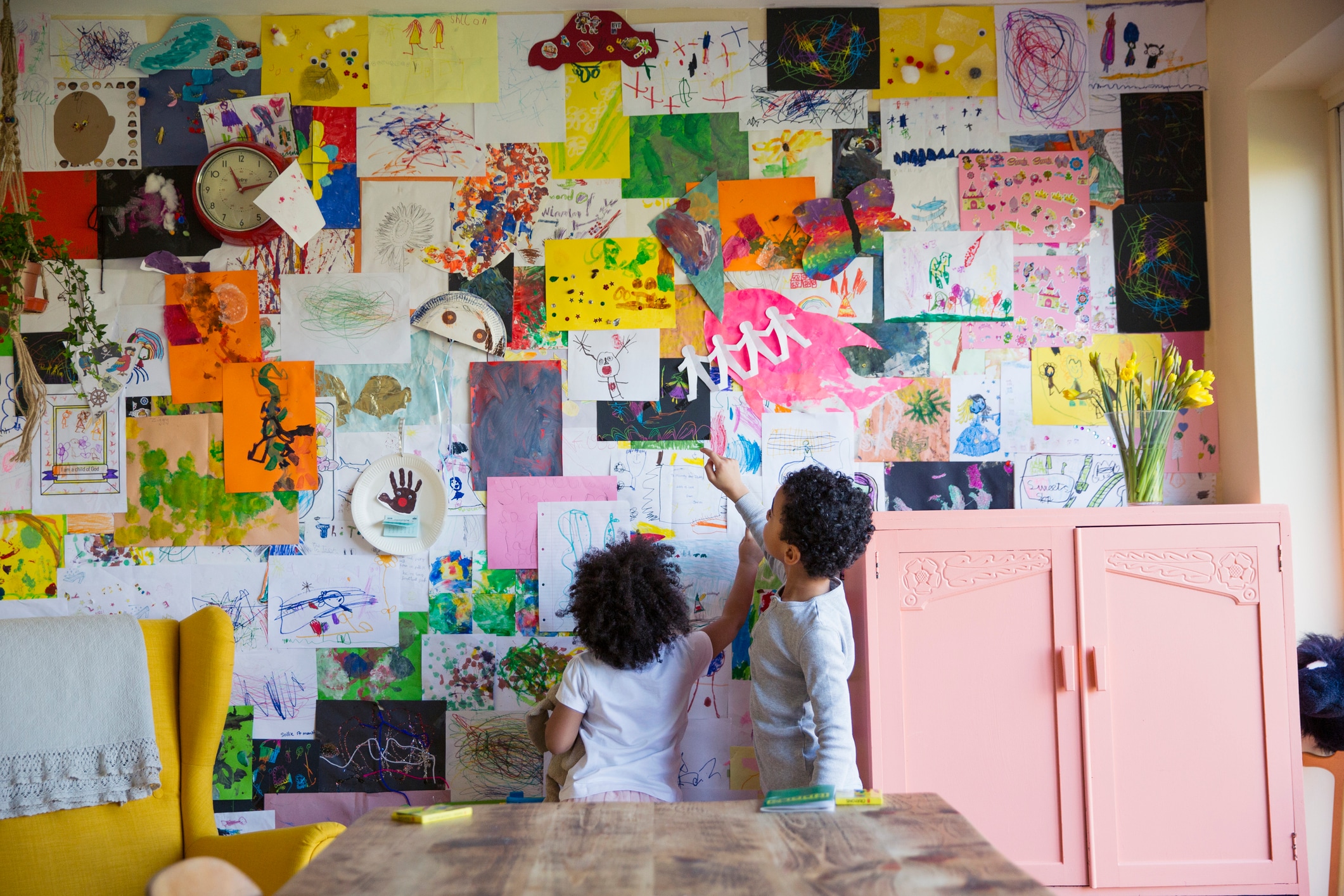From authoritative parenting to gentle parenting, the multitude of parenting styles all attempt to answer one question: How do I raise the best human possible? But they all answer it in different ways, allowing for personality and value differences. There really is something for everyone, and it can make your head spin when you’re doing your research. One parenting style that is guaranteed to divide a room of people is attachment parenting.
Attachment parenting focuses on connection and responsiveness and is associated with numerous short- and long-term benefits for a child. The parenting style promotes “emotional well-being, social development and long-term success in various areas of life,” says Julie K. Jones, who holds her doctorate in philosophy and is a licensed professional counselor and owner and executive director at Well Life Therapy, LLC.
Read on to hear from parents who have implemented it and experts on the subject.
What is attachment parenting?
“Attachment parenting is a parenting philosophy that emphasizes forming a strong emotional bond between caregivers (typically parents) and their children,” says Jones. “This approach is rooted in the belief that forming secure attachments during infancy and childhood is crucial for a child’s emotional, social and psychological development.”
Attachment parenting officially hearkens back to “The Attachment Parenting Book” and to the seven “Baby Bs,” as coined by William Sears, pediatrician and author and his wife, Martha Sears, registered nurse and author. They were inspired by the psychological concept of attachment theory, which posits that children need to form secure attachments with their parental figure(s) to avoid emotional maladjustment later in life.
At their source, the seven “Baby Bs” are meant to encourage loving, responsive and instinctual parenting. They are, as follows:
- Birth bonding
- Breastfeeding
- Babywearing
- Bedding close to baby
- Belief in the language value of your baby’s cry
- Beware of baby trainers
- Balance (there were six “Bs” in the book, but “balance” was added in the late 2010s)
While these parenting practices might feel extreme to proponents of other parenting styles, the parents we spoke to expressed that attachment parenting came naturally.
“I don’t think I ever saw a list or even knew that it was called attachment parenting. To me it was just parenting,” says Ally Johnson, real estate legal professional and parent of two in Overland Park, Kansas. She and her partner steered clear of methods like “cry it out” (a sleep training method in which you allow your baby to cry themselves to sleep, assuming all of their needs have been met) and instead practiced extended breastfeeding and co-slept. They framed their approach by asking themselves, “if you wouldn’t do it to a puppy, why would you do it to a baby?”
By embracing this consistently connected form of parenting, attachment parenting aims to create a secure attachment between parent and child, as opposed to the other three attachment styles, as explored in a study published by Paediatrics & Child Health:
- Insecure-resistant: An insecure attachment between the child and an inconsistent and insensitive caregiver
- Insecure-avoidant: A disconnected attachment as a result of a caregiver that provides insufficient emotional support
- Insecure-disorganized: An attachment characterized by fear or abuse that leads to erratic behavior
What does attachment parenting look like?
At its core, attachment parenting “encourages parents to be attuned to their child’s needs and to respond promptly and empathetically,” says Jones. “This responsiveness fosters a sense of security and trust in the child, laying the foundation for healthy emotional development.” But what does that look like in practice?
Babies raised by parents utilizing an attachment parenting style likely follow some form of Dr. Sears’ guidance, including the seven “Baby B’s.” As a result, parents may practice exclusive and extended breastfeeding, co-sleeping and rarely, if ever, allow their child to cry.
In addition to extended breastfeeding and co-sleeping, for Johnson this meant she stayed “in orbit around [her] kids while they were young,” foregoing trips alone and long date nights.
Cox practiced co-sleeping and extended breastfeeding, as well, until “it no longer worked for both of us” and responded to her children’s cries quickly, unless safety (like while driving) was in question. She would then talk to them so they knew she was there, until she could physically attend to them.
And while these practices may feel natural and easy to some, it is important to note that they are not achievable for everyone. “Many mothers are unable to breastfeed for various reasons,” says Stapert. And babywearing constantly may be too much for some people’s mental health. So it’s important to note that even Dr. Sears advises that “attachment parenting is an approach, rather than a strict set of rules.”
“Attachment parenting is not about rigid adherence to specific practices but rather about fostering a secure attachment relationship with your child. Be flexible and willing to adjust your parenting approach based on your child’s temperament, developmental stage and individual needs.”
—Julie K. Jones, a licensed professional counselor and owner and executive director at Well Life Therapy, LLC
The pros and cons of attachment parenting
As with any style of parenting, there are pros and cons, which may occur more or less depending on the personalities of the parents and the children and the quality of communication between parents regarding their parenting choices. Below, experts and parents share the pros and cons they have experienced with attachment parenting.
Pros of attachment parenting
A strong bond between parent and child
When making parenting decisions, many — if not most — people aim to be close with their children. But how you arrive at that place isn’t always so clear. Ensuring their emotional and physical needs are met are the base requirements, but attachment parenting methods can further encourage a strong relationship. “Practices such as babywearing, breastfeeding and co-sleeping release oxytocin, which can lead to feelings of joy and a rewarding caregiver-child interaction,” says Stapert.
And for the many parents who have to return to work early after having a child, attachment parenting can also be a way to incorporate connection into available moments of the day. When Johnson went back to work four weeks postpartum, she found that attachment parenting helped her ground herself to her family as soon as she got home.”
It sets them up for healthy relationships
“By prioritizing responsive and nurturing caregiving practices, attachment parenting lays the groundwork for healthy relationships throughout the child’s life,” says Jones. Positive interactions with their parents can promote higher self-esteem and create a standard of empathy and connection they will expect in a relationship, adds Jones.
It can cause less stress for the caregiver
While this may not be true for everyone, some parents find following an attachment parenting style reduces stress, as it feels more intuitive. For example, Pérez-La Sala said she believed following these methods has resulted in her baby being more easily soothed, which in turn makes it easier to take them places.
Cox agreed, saying that attachment parenting felt natural and made parenting feel less stressful because she was comfortable in the knowledge that she was doing the right thing for her child.“
Cons of attachment parenting
An over-dependence on one or both parents
It is not surprising that the flipside of emphasizing a closeness with your child would result in them forming an over-dependence on you. For example, Stapert says that “consistent babywearing can also lead to an infant being unable to nap independently.” And while that can seem relatively harmless at first glance, she adds that it can “[lead] to the caregiver never getting a break or a time of separation from their child, which a lot of parents need in order to prevent burnout.”
Pérez-La Sala agrees that this can be a con for her and her partner, in that her child is more mom-focused, which can be overwhelming if her attention is needed elsewhere.
Strain on the romantic relationship
Although bringing a new family member into the house can be stressful for all involved, the attachment parenting style can cause additional stress between romantic partners. Due to its connected nature, “it leaves little to no room for parents to connect with one another without the child present,” says Stapert. “This can lead to distancing and one parent feeling left out of the dynamic, especially if the other parent is the one doing all of the breastfeeding and babywearing.”
It can cause feelings of guilt, anxiety and depression
With so many guidelines to follow, it can be easy to feel like a failure if you don’t meet one or more of them. As Stapert says, “a parent might work during the day, leading them to feel pressured to babywear during all of the hours they are at home. This can be very overwhelming, and if an expectation is set that the parent cannot achieve, they might start experiencing symptoms of anxiety, guilt and depression.”
In addition, the potential social isolation that comes from constant attachment to a baby, and the personal sacrifice of time and emotional resources can add to these concerns.
“Although practices like baby wearing, breastfeeding and bedding close to the baby can help establish a parent-child connection and bond, some caregivers might not have the time available to consistently do these things,.
—Erika Stapert, a senior child, adolescent and adult psychologist
How to know if attachment parenting is right for you
Just like any other parenting styles, attachment parenting isn’t for everyone. It can be demanding and difficult to follow all of the guidelines, particularly for the mother, says Erika Stapert, a senior child, adolescent and adult psychologist at Manhattan Psychology Group. “Although practices like baby wearing, breastfeeding and bedding close to the baby can help establish a parent-child connection and bond, some caregivers might not have the time available to consistently do these things,” says Stapert. And the pressure to do so can lead to burnout for parents.
Educate yourself
The only way you’ll truly know if attachment parenting is for you and your family is by learning as much about it as you can. Jones advises that parents research attachment theory (which attachment parenting is based on), as well as seeking out reliable resources and workshops to deepen their understanding of attachment parenting.
And if you’re planning to breastfeed and co-sleep, educate yourself about your breastfeeding rights both in public and in your workplace, as well as ensuring your co-sleeping space (if applicable) is safe, says Jones
It is important to note, however, that the American Academy of Pediatrics (AAP) does not recommend co-sleeping, as there is research that has connected it with sudden infant death syndrome (SIDS). There is still a benefit to room-sharing, however, as it allows for easier breastfeeding and is associated with a lower risk of SIDS.
Discuss it with your partner
With all of your resources at hand, experts and parents agree that discussing attachment parenting with your partner, if applicable, is essential.
While she says attachment parenting felt natural to both her and her husband, Janine Pérez-La Sala, an associate director of marketing and parent of one in Bellmore, New York, advises talking through your parenting plan beforehand so you’re both in agreement. “We talked a lot about having kids before we had one and a big piece of that was making sure we were ready to give them everything they need,” she adds. “Attachment-style parenting can be so all consuming if both partners are not on the same page about it.” For them, that means breastfeeding on demand, cosleeping as a family and responding immediately to their child’s cries.
Develop a thick skin
As with so many aspects of raising children, attachment parenting can be a contentious topic. Grandparents and older generations may view it as over-attentive compared to the more hands-off parenting approaches, while friends might question practices like extended breastfeeding. And while her family is supportive, Pérez-La Sala says not all of her friends understand her practicing attachment parenting. For example, those who embrace sleep training and have their baby sleeping in their own room say she is often met with a response of “I just couldn’t do that” when they find out she practices attachment parenting concepts like co-sleeping amongst those who embrace methods like sleep training.
Breanne Cox, an administrative assistant and parent of two in Kennewick, Washington, has had to learn to let other people’s opinions roll off her back. “I tried my best to explain [my methods], but at the end of the day, I was not responsible for their feelings and thoughts,” says Cox.
Be flexible
While there are certainly individuals who follow attachment parenting, as defined by Sears, to the letter, even Sears recommends a degree of flexibility. What works for one child and one family, may not work for another.
“Attachment parenting is not about rigid adherence to specific practices but rather about fostering a secure attachment relationship with your child,” says Jones. “Be flexible and willing to adjust your parenting approach based on your child’s temperament, developmental stage and individual needs.”
The final word on attachment parenting
When the caregivers involved agree on parenting choices, and those choices leave room for the uniqueness of each family’s dynamic, attachment parenting can be a wonderful way to foster a positive relationship between parent and child. Attachment parenting has the potential to generate a number of benefits for a child, including a secure relationship with their parent(s), positive self-esteem and healthier relationships in their future, according to the experts we spoke to.
However, they also recommend not getting mired down in the absolutes of attachment parenting, as taught by Sears, to the detriment of your own mental health or the health of your relationships with your child and partner.
Where your beliefs and/or instincts disagree with the official rules of attachment parenting, Jones advises parents to instead focus on connecting with their child. “At the heart of attachment parenting is the emphasis on building a strong emotional bond between parent and child,” she says. “Focus on nurturing that connection through loving and responsive caregiving, rather than striving for perfection.”





